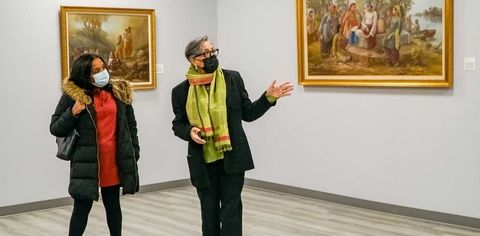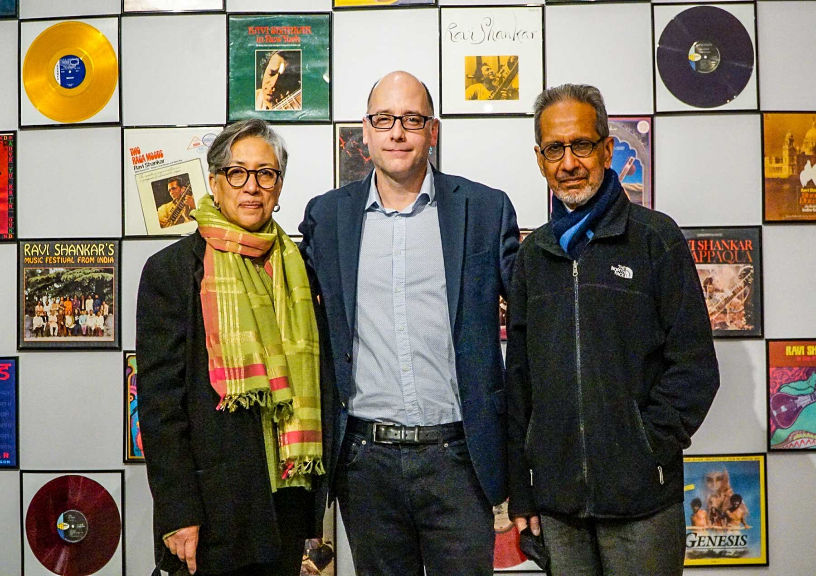
When they first met, he had generic prints on the walls of his bachelor pad. She didn’t like it. By Meena Thiruvengadam
Shireen and Afzal Ahmad eventually replaced those generic prints with beautiful paintings they found on trips home to Pakistan, where they began to befriend a number of artists. What they didn’t know at the time was that they were beginning a collection that would grow into the foundation of a South Asian cultural centre in one of the most diverse cities in the United States of America.
After retiring from decades-long medical careers in Chicago, the pair have chosen not to sit still. Instead, they have poured their time — and their personal art collection — into the South Asia Institute, a hub for South Asian art, culture, and literature that opened at the end of 2019.
South Asian art in Chicago breaks down cultural barriers
The South Asia Institute has brought the couple’s collection to a historic building in the heart of Chicago’s historic Motor Row district. Through curated exhibits, special events, and education programs, the South Asia Institute aims to elevate the work of South Asian artists while using art to break down cultural barriers.

“It’s what we grew up with as immigrants,” Shireen Ahmad, a former professor of anesthesiology at Northwestern University said. “We didn’t identify with European art.”
The couple also had no intention of spending their retirement doing nothing. “This is our relaxation,” Afzal Ahmad said. “We didn’t want to sit around after our retirement.”
After spending more than four decades in ophthalmology, he sees the South Asia Institute as a new job, one that allows him and his wife to do very different work and share a beloved art collection with the world. For him, it’s also a way to show there may be more to South Asian immigrant communities than western culture tends to acknowledge.
People tend to expect model minority behaviour and overlook the multidimensional aspects of immigrant life, he said. “We’re just two-dimensional people in their eyes” Afzal continued. “But we do different things like just like any other community does.”
A recent exhibit at the South Asia Institute provided a walk through the life of acclaimed Indian musician Ravi Shankar, and a future exhibit will highlight the work of a Pakistani sculptor Amin Gulgee.

“It’s a very personal collection”
Head upstairs to an event space and you’ll find several paintings that formerly hung in the Ahmad home. “It’s a very personal collection. Ninety per cent of these works [have] been on the walls in our home,” Shireen said.
But eventually, the collection outgrew their home and filled every inch of their storage space.
“We ended up with several storerooms in our apartment, several storerooms in his office, you know where works were being stored,” Shireen recounted. “That’s when you begin to realise that it’s really a little more than just a small collection, you know, to enjoy on your walls.”
While several museums in the USA have permanent collections of South Asian art, few spaces exist that are dedicated solely to South Asian art and culture.
“There is very little exposure to South Asian art in mainstream museums,” Shireen said.
The Metropolitan Museum of Art in New York has a collection of thousands of pieces from India, Pakistan, Bangladesh, Sri Lanka, and Nepal. The Rubin Museum in New York focuses its efforts on Himalayan art with a collection of more than 3,400 pieces spanning 1,500 years of Tibetan, Indian, Pakistani, Afghan, Chinese and Nepalese history.
And now, the South Asia Institute is only just beginning to gain momentum.
(This story first appeared on www.travelandleisure.com)
Related: These 10 Museums In Asia Offer A Peek Into The Continent’s Past










